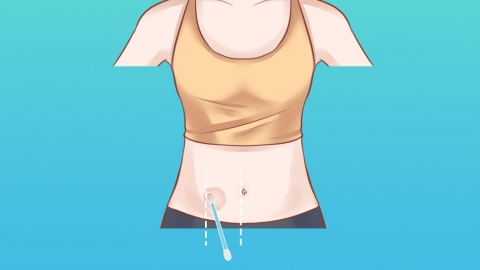How is acute phlegmonous appendicitis treated?
In general, the treatment methods for acute phlegmonous appendicitis mainly include general management, antibiotic therapy, surgical treatment, symptomatic supportive care, and traditional Chinese medicine (TCM) as adjunctive therapy. The specific analysis is as follows:

1. General Management
Patients should remain in bed and avoid physical activity that may aggravate peritoneal irritation. Temporary fasting and water restriction are necessary to reduce gastrointestinal burden and prevent food stimulation from exacerbating inflammation and causing its spread. Vital signs such as body temperature and blood pressure should be closely monitored, and changes in abdominal pain observed, providing a basis for further treatment.
2. Antibiotic Therapy
To control infection spread, antibiotics should be administered promptly. Under medical guidance, patients may receive medications such as ceftriaxone sodium for injection, metronidazole injection, or piperacillin sodium and tazobactam sodium for injection. These drugs help eliminate or inhibit pathogenic bacteria, reduce inflammatory response of the appendix, and prepare the patient for surgery.
3. Surgical Treatment
Surgery is the key curative method for acute phlegmonous appendicitis, commonly performed via laparoscopic appendectomy or open appendectomy. Complete removal of the diseased appendix and clearance of inflammatory exudates within the abdominal cavity effectively prevent serious complications such as perforation and peritonitis, with relatively rapid postoperative recovery.
4. Symptomatic and Supportive Care
Symptoms such as fever and pain should be managed appropriately. For high fever, physical cooling methods or ibuprofen sustained-release capsules (as prescribed) can be used. For severe abdominal pain, pethidine hydrochloride injection may be administered under medical supervision to relieve discomfort. Intravenous fluid infusion is also important to replenish fluids and electrolytes and correct acid-base imbalances.
5. Traditional Chinese Medicine (TCM) Adjunctive Therapy
According to TCM theory, this condition falls under the category of "intestinal abscess" (chang yong), primarily caused by stagnation due to damp-heat. Under medical guidance, proprietary Chinese medicines such as Lanyan Xiaoyan tablets or Qingre Jiedu oral liquid may be used as supplementary treatments. Acupuncture at specific points such as Zusanli (ST36) and Lanyu (EX-LE7) may also help alleviate pain and assist in controlling inflammation.
During treatment, patients must strictly follow medical advice. Postoperative patients should maintain wound cleanliness to prevent infection. During recovery, diet should be gradually adjusted, progressing from liquid foods to regular meals, avoiding spicy and greasy foods. If abnormalities such as redness and swelling of the wound or worsening abdominal pain occur, the physician should be informed immediately for prompt intervention.




